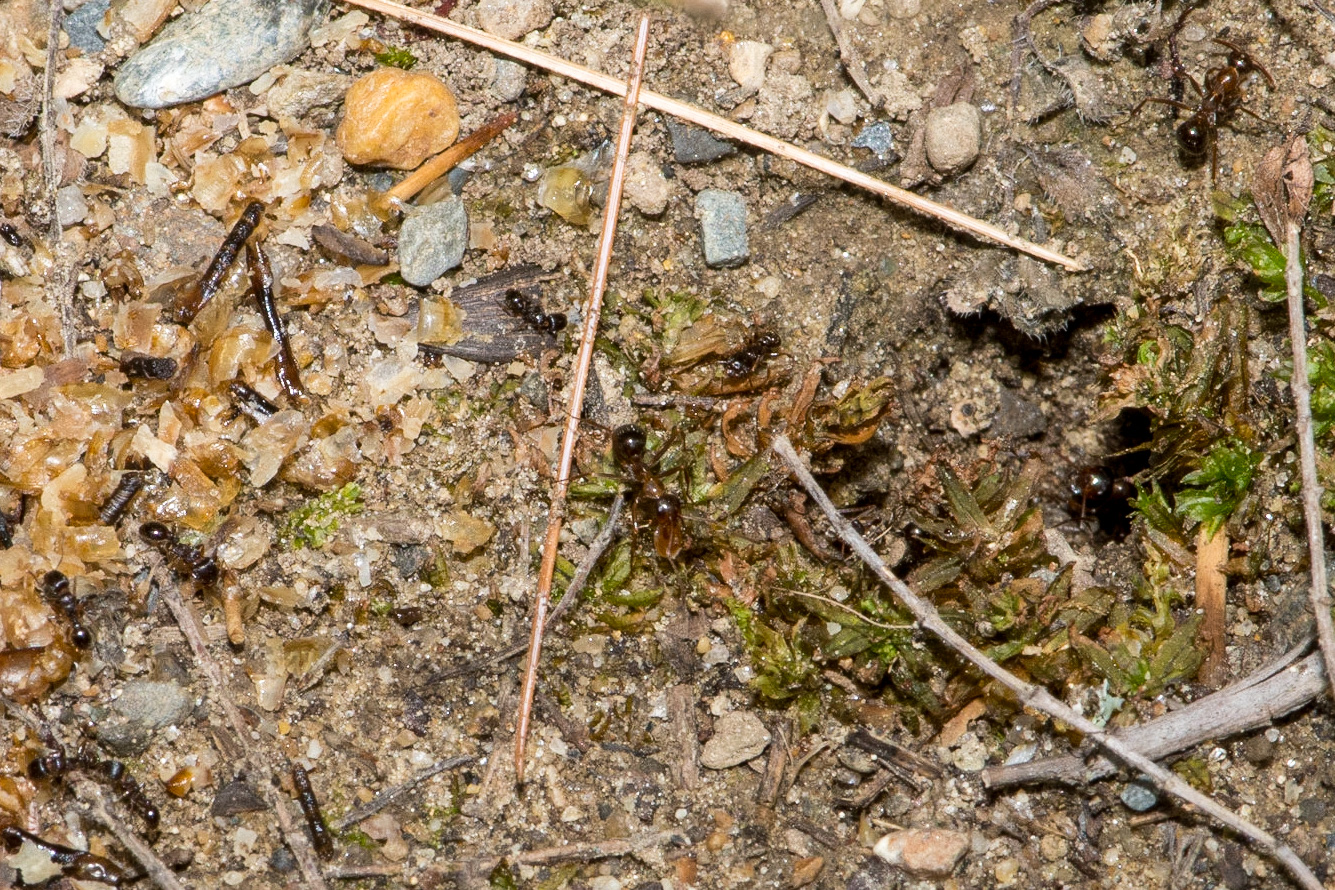So, here's the Cliff's Notes on Riitta Savolainen and Kari Vepsäläinen, A Competition Hierarchy among Boreal Ants: Impact on Resource Partitioning and Community Structure. I think it suggests the behavior I witnessed is, in fact, naturally occurring formicine behavior. Globally, colonies compete for resources among themselves. That competition is modified by physical issues (terrain, distance between competitors and resources, temperature, etc.) and biological issues specific to the competing species (colony maturity, species size, species dietary preferences) with a significant biological attribute being forager density (i.e. the number of foragers deployed by each colony per unit area). Based on other's work that had preceded theirs, Savolainen and Vepsäläinen postulated that the above factors are modified to a greater extent by a colony's position in a "competition hierarchy". This hierarchy is determined by differences in each colony's social development and behavior. There are three broad hierarchical groups; territorials (who protect their nest, food resources, and territory), encounterers (who protect their nest and food resources), and submissives (who protect only their nest). The alpha group of territorials is termed superior competitors, who fiercely protect their nest, food resources, and territory. Two colonies of territorials would not co-inhabit an area. A colony of territorials and a colony of encounterers could co-inhabit an area though the density of encounterer colonies would be diminished and pushed to the periphery of the territorials foraging area. The encounterers might also forage at a time when the territorial foragers were least likely to be present in large numbers. Encounterer-encounterer co-inhabitation is fraught but possible and encounterer-submissive co-habitation can more easily occur. Finally, territorials and submissives could co-inhabit an area with their colonies interspersed in the territorials area at a greater density than encounterers. When faced with the presence of territorial foragers, the submissives might alter their food intake (i.e., substitute a carbohydrate for protein) and/or alter foraging time to avoid contact. Through observation in the field and statistical analysis Savolainen and Vepsäläinen were able to corroborate their findings and actually predict colony behavior. It seems that the non-competitive behavior I witnessed between Formica sp. and Tetramorium sp. is a known behavior and to my eye, the Formica seemed to be the submissives! 



















